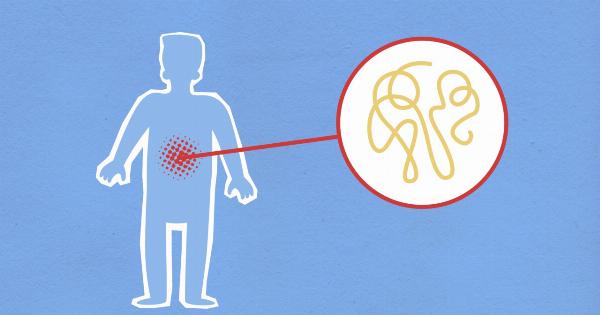Bloating is a common digestive problem that can make your abdomen feel swollen or full. It is often accompanied by discomfort, excessive gas, and sometimes pain.
Bloating can be caused by various factors, such as overeating, indigestion, food intolerances, and certain medical conditions.
Understanding the FODMAP Diet
The FODMAP diet is a science-backed approach to managing digestive symptoms, especially bloating, by avoiding certain types of carbohydrates.
FODMAP stands for Fermentable Oligosaccharides, Disaccharides, Monosaccharides, and Polyols – a group of sugars and fibers that are poorly absorbed by the small intestine.
How Does the FODMAP Diet Work?
The FODMAP diet involves a three-step process: restriction, reintroduction, and personalization.
Restriction Phase
During the restriction phase, you eliminate high-FODMAP foods from your diet for a limited period, typically 2-6 weeks. This phase allows your digestive system to calm down, reducing symptoms like bloating.
High-FODMAP foods include certain fruits and vegetables (such as apples, onions, and garlic), dairy products, wheat, legumes, and artificial sweeteners.
Reintroduction Phase
The reintroduction phase involves systematically reintroducing and testing different FODMAP groups to identify specific triggers for your bloating and other digestive symptoms.
This process helps you understand which FODMAPs are better tolerated by your body and determine your individual tolerance levels.
Personalization Phase
In the personalization phase, you create a personalized FODMAP diet plan based on your tolerance levels. This phase allows you to enjoy a wide variety of foods while minimizing the risk of bloating and other digestive issues.
It is important to note that the FODMAP diet is not meant to be followed strictly for a lifetime, but rather to identify and manage trigger foods.
Benefits of the FODMAP Diet
The FODMAP diet has been shown to be highly effective in reducing bloating and other digestive symptoms in individuals with irritable bowel syndrome (IBS) and other digestive disorders.
By identifying and eliminating specific trigger foods, you can experience significant relief and improve your overall quality of life.
Challenges of the FODMAP Diet
While the FODMAP diet can be highly beneficial, it can also be challenging to follow, especially during the initial restriction phase. The diet requires careful planning, label reading, and potentially modifying your current eating habits.
It is recommended to work with a registered dietitian who specializes in the FODMAP diet to ensure nutritionally balanced meals and proper guidance throughout the process.
Tips for Following the FODMAP Diet
Here are some helpful tips to successfully navigate the FODMAP diet and alleviate bloating:.
1. Educate Yourself
Learn about high-FODMAP and low-FODMAP foods to make informed choices and understand potential sources of your bloating. Keep a list of safe foods and recipes handy to ease meal planning.
2. Keep a Food Diary
Maintain a food diary to track your meals, symptoms, and potential trigger foods. This can assist you in identifying patterns and making necessary adjustments during the reintroduction and personalization phases.
3. Focus on Low-FODMAP Foods
Emphasize consuming low-FODMAP foods such as lean proteins, gluten-free grains, lactose-free dairy products (if tolerated), non-fermentable fiber sources (like carrots and spinach), and suitable fruits like bananas and strawberries.
4. Experiment with Substitutes
Explore alternative ingredients and substitutes to recreate favorite recipes without high-FODMAP ingredients. For example, use garlic-infused oil instead of whole garlic cloves or swap wheat products for gluten-free alternatives.
5. Read Food Labels Carefully
Be vigilant about reading food labels to identify potential sources of hidden FODMAPs.
Many processed foods, sauces, and condiments can contain high-FODMAP ingredients, so it’s crucial to check labels for additives like fructose, high-fructose corn syrup, inulin, or sorbitol.
6. Seek Professional Guidance
Consult with a registered dietitian who specializes in the FODMAP diet. They can provide expert advice, create personalized meal plans, and address any concerns or challenges you may encounter throughout the process.
Lifestyle Factors and Bloating
While the FODMAP diet can significantly help reduce bloating, certain lifestyle factors can also contribute to digestive issues. Here are a few additional tips to complement the FODMAP diet:.
1. Stay Hydrated
Drink an adequate amount of water throughout the day to support healthy digestion. Dehydration can lead to constipation and worsen bloating.
2. Mindful Eating
Eat slowly and mindfully, focusing on your food. Chew thoroughly to aid digestion and allow your body to recognize satiety. Avoid overeating, as it can put additional strain on your digestive system.
3. Regular Physical Activity
Incorporate regular physical activity into your routine to promote healthy digestion. Exercise can help stimulate bowel movements and relieve bloating.
4. Stress Management
High-stress levels can exacerbate digestive symptoms, including bloating. Implement stress management techniques such as yoga, meditation, or deep breathing exercises to promote relaxation and reduce bloating.
Conclusion
The FODMAP diet is a valuable tool for eliminating bloating and other digestive symptoms in individuals with IBS and digestive disorders.
By following a structured process of restriction, reintroduction, and personalization, you can identify and manage your trigger foods to achieve long-lasting relief. Remember, it is essential to seek guidance from a registered dietitian to ensure a successful and nutritionally balanced journey on the FODMAP diet.




























